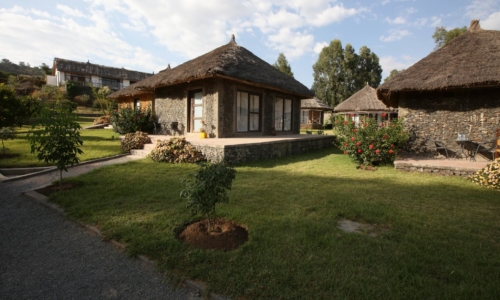
CULTURAL CORNUCOPIA OF AFRICA
CLIMATE
oceanic & tropical savanna
DENSITY
214 people per square mile
% OF LAND UNDER CONSERVATION
18%
POPULATION
99,500,000
COUNTRY SIZE
430,000 square miles
CONSERVATION SCORE
6/10
As the heart of ancient sub-Saharan Africa, “Ethiopian” became the byword for African people, language, and culture. Still today, its unique cultural heritage, rich history, and notable biodiversity are reflected in a tally of nine UNESCO World Heritage Sites – more than any other country in Africa. As home to some of Africa’s highest peaks and lowest basins, as well as, an incredible density of rivers and diversity of topographies, Ethiopia is a safari-goer’s dream. Journeys through the region have the potential to combine game viewing with visits to archeological sites yielding some of the oldest traces of mankind, the plus the opportunity for cultural interactions with tribes that seem to have stepped directly out of the ancient past.
Ethiopia is a land of dramatic landscapes whose diverse scenic highlights extend from the jagged peaks of the Simien Mountains to the deep chasms of the Blue Nile Gorge to the active lava lakes of the Danakil to the bare sandstone cliffs of eastern Tigray. It is so much more than the dry desert of popular images and is home to a host of rivers and lakes, including Lake Tana, the source of the Blue Nile. These diverse eco-systems enjoy a wide range of animals from the usual lions, elephants, and giraffes to the rarer Ethiopian wolf, Walia ibex, and gelada baboon.
As the hub of African trade routes, Ethiopia was the most populated and metropolitan of sub-Saharan Africa’s ancient empires. Not surprisingly, it was the first African nation to officially convert to Christianity. Yet during the European “Scramble for Africa” in the late 19th century, Ethiopia is the only African country that retained its independence. Its relative stability across the millennia allowed the diversity of tribes in the region to endure into modern times. Today, Ethiopia exhibits a strange familiarity to Westerners stemming from the early Christian influence. And yet at the same time the country offers unrivaled cultural diversity, with scores of distinct tribes that in large part escaped outside subjugation through the ages.
Visitors today can discover the ancient past with visits to the museum in Addis Abba to see the earliest hominid fossils discovered from the Cradle of Humankind or view temples once dedicated to the infamous Queen of Sheba. There are also present day discoveries like a trip Kafa Biosphere Reserve, a UNESCO World Heritage site and home to verdant, rainforests producing renowned coffee beans.


CULTURAL CORNUCOPIA OF AFRICA

CLIMATE
oceanic & tropical savanna
DENSITY
214 people per square mile
% OF LAND UNDER CONSERVATION
18%
POPULATION
99,500,000
COUNTRY SIZE
430,000 square miles
CONSERVATION SCORE
6/10
As the heart of ancient sub-Saharan Africa, “Ethiopian” became the byword for African people, language, and culture. Still today, its unique cultural heritage, rich history, and notable biodiversity are reflected in a tally of nine UNESCO World Heritage Sites – more than any other country in Africa. As home to some of Africa’s highest peaks and lowest basins, as well as, an incredible density of rivers and diversity of topographies, Ethiopia is a safari-goer’s dream. Journeys through the region have the potential to combine game viewing with visits to archeological sites yielding some of the oldest traces of mankind, the plus the opportunity for cultural interactions with tribes that seem to have stepped directly out of the ancient past.
Ethiopia is a land of dramatic landscapes whose diverse scenic highlights extend from the jagged peaks of the Simien Mountains to the deep chasms of the Blue Nile Gorge to the active lava lakes of the Danakil to the bare sandstone cliffs of eastern Tigray. It is so much more than the dry desert of popular images and is home to a host of rivers and lakes, including Lake Tana, the source of the Blue Nile. These diverse eco-systems enjoy a wide range of animals from the usual lions, elephants, and giraffes to the rarer Ethiopian wolf, Walia ibex, and gelada baboon.
As the hub of African trade routes, Ethiopia was the most populated and metropolitan of sub-Saharan Africa’s ancient empires. Not surprisingly, it was the first African nation to officially convert to Christianity. Yet during the European “Scramble for Africa” in the late 19th century, Ethiopia is the only African country that retained its independence. Its relative stability across the millennia allowed the diversity of tribes in the region to endure into modern times. Today, Ethiopia exhibits a strange familiarity to Westerners stemming from the early Christian influence. And yet at the same time the country offers unrivaled cultural diversity, with scores of distinct tribes that in large part escaped outside subjugation through the ages.
Visitors today can discover the ancient past with visits to the museum in Addis Abba to see the earliest hominid fossils discovered from the Cradle of Humankind or view temples once dedicated to the infamous Queen of Sheba. There are also present day discoveries like a trip Kafa Biosphere Reserve, a UNESCO World Heritage site and home to verdant, rainforests producing renowned coffee beans.

































